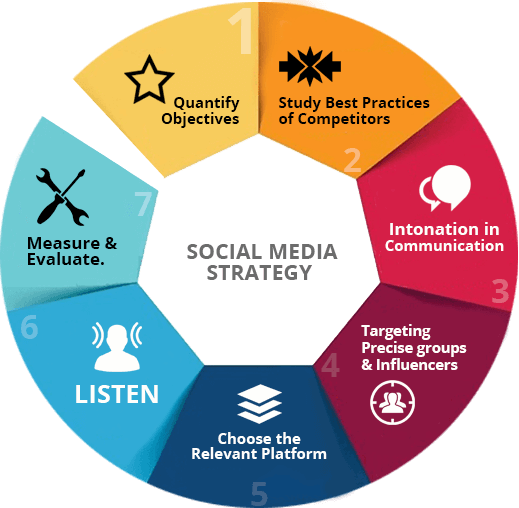Learn how to create a successful social media strategy with our comprehensive guide. Discover key steps including setting goals, identifying your target audience, choosing the right platforms, developing a content strategy, engaging with your audience, and analyzing performance. Maximize your social media impact and achieve your business objectives effectively.
Developing an effective social media plan requires a series of crucial steps ranging from defining objectives to evaluating outcomes. An thoughtfully crafted strategy guarantees that your media initiatives are impactful and in line with your business goals. Below is a comprehensive roadmap for crafting a successful social media strategy.
Understanding Your Goals and Objectives
To create an effective media strategy the initial step is to outline your goals and objectives. These should be in line with your overall business objectives and offer a clear roadmap for your social media initiatives. Typical social media goals encompass enhancing brand visibility, driving traffic to your website, generating leads and fostering audience engagement.
When establishing goals make sure they are specific, measurable, achievable, relevant and time bound (SMART). For instance instead of opting for an goal like "boost brand recognition" you could set a SMART goal such as "increase Instagram followers by 25% within the next six months."
Identifying Your Target Audience
To create content that connects with your audience it's important to understand who they are. Begin by researching your audience to learn about their age, interests and behaviors. You can use tools like social media analytics, surveys and market research reports to gather this information.
Develop detailed profiles that represent your customers. These profiles should include details like age, gender, location, interests and social media habits. By knowing your audience well you can customize your content and messaging to align with their preferences and requirements.
Choosing the Right Social Media Platforms
Not every social media platform is a fit for business. Choosing the right ones means looking at where your audience hangs out and which platforms match your objectives. For example if you're targeting young professionals LinkedIn and Instagram could work better. Conversely if your audience is varied Facebook or Twitter might be more suitable. Concentrate your efforts on platforms that offer the best return on investment. It's wiser to shine on a few platforms than to stretch yourself too across many.
Developing a Content Strategy
An effective content strategy is crucial, for a social media success. Your content needs to be captivating relevant and in line with your objectives. Begin by determining the formats of content you'll produce such as articles, visuals videos or audio shows.
Create a content calendar to structure and time your posts. This ensures a posting routine and enables you to prepare for occasions or marketing campaigns. Your content calendar should outline topics, release dates and the platforms where content will be distributed.
Engage with Your Audience
Social media serves as a platform for interaction and connecting with your audience is crucial, for establishing rapport and nurturing loyalty. Make sure to reply to comments, messages and tags promptly and genuinely. Promote content from users and provide avenues for your audience to join conversations and share their stories. Think about organizing contests, surveys or live question and answer sessions on media to enhance engagement. These features can improve your visibility and foster a sense of community around your brand.
Monitoring and Analyzing Performance
To assess how well your media approach is performing keep a close eye on your progress. Utilize the tools offered by media platforms or external resources to measure important indicators like engagement levels, click rates and conversion success. Compare your results to the objectives established from the start. Pinpoint the content types and tactics that are yielding outcomes and the aspects that require enhancement. Leverage this information to make decisions and modify your strategy accordingly.
Adapting and Improving Your Strategy
The landscape of media is ever changing and being adaptable is key, to maintaining an effective approach. Its important to regularly assess your strategy and make modifications based on data emerging trends and shifts in your business objectives. Stay updated on features and developments across media platforms and think about integrating them into your strategy. For instance if a new type of content or platform feature gains traction consider its potential impact on enhancing your strategy and achieving your goals. To sum up crafting a successful social media strategy entails defining objectives understanding your audience selecting platforms devising a content plan interacting with your audience and consistently monitoring and adjusting your tactics. By following these guidelines you can establish a strong media presence that yields results and aligns with your business goals.
